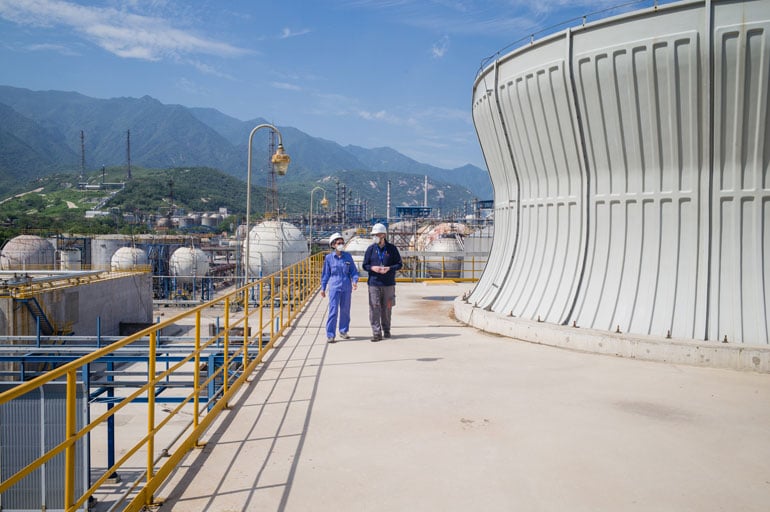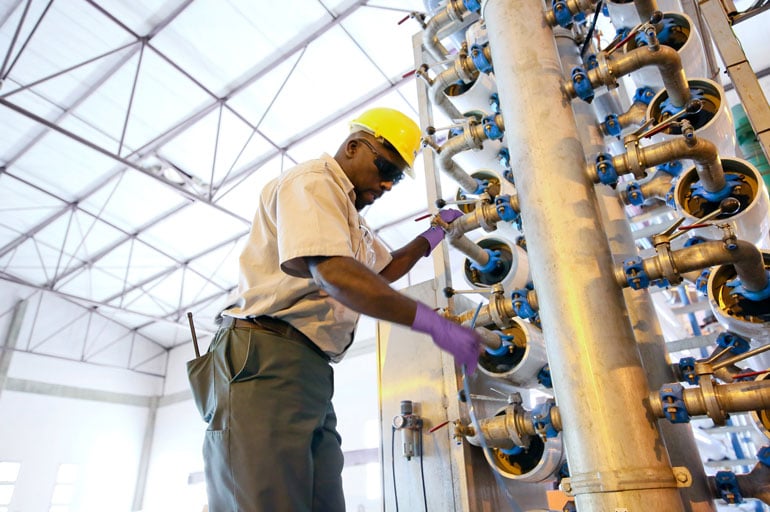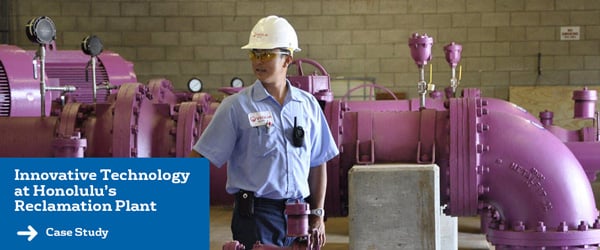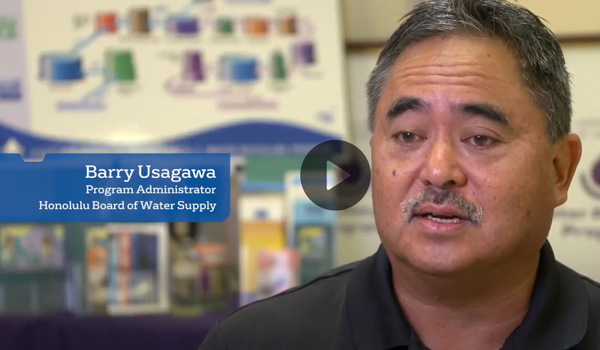Companies in industry are making public commitments to reduce and reuse water as part of 2030, 2035 and 2050 sustainability goals. These pledges are usually made alongside other sustainability objectives such as carbon and waste reduction. Water projects, however, are often the lowest priority of the three because there is usually more pressure from the public and investors to reduce greenhouse gas emissions and waste. That is beginning to change.
Increasing water scarcity has already begun to affect permit applications for new industrial construction, particularly in areas where water resources are limited or where there are competing demands for water. In some cases, regulatory agencies may restrict or deny permits for new construction projects that are expected to consume large amounts of water, especially if there are concerns about the impact on the local water supply or the ability of the ecosystem to sustain water withdrawals.
In this blog, we’ll focus on the biggest areas of opportunity for implementing reuse and provide a four-step roadmap.
Increasing importance for water efficiency
According to a 2023 sustainability study of 245 US companies conducted by a third party on behalf of Veolia, less than 12% have developed goals around increasing water reuse and/or water efficiency. That said, the future ambitions to do so are high with 51% saying they plan to set goals around water efficiency/reuse goals within the next two years
| Objectives | Developed Goal | Plan to Develop Goal |
| Zero liquid discharge | 28% | 30% |
| Increase water reuse | 12% | 35% |
| Increase water efficiency | 11% | 51% |
Opportunities for water reuse in industry

Cooling towers
Cooling towers are used to cool industrial processes such as power generation, manufacturing and chemical processing. These systems require large amounts of water, and the water that leaves the system is typically warm and contains impurities. Treating this water for reuse can significantly reduce consumption and costs. Also, if the facility has reverse osmosis systems, often the osmosis reject water can be used as a supplement for cooling tower make-up.
Process water
Many industrial processes require water for various stages of production (e.g., rinsing/cleaning) in various food and beverage manufacturing processes and fabricating, processing, washing, diluting, cooling and transporting products in industries like electronics, paper and chemical manufacturing. Treating this water for reuse can reduce the overall water consumption and costs.
Wastewater
Industries generate wastewater that can be treated for reuse in applications such as cooling tower make-up, irrigation and toilet flushing. Treating wastewater for reuse can reduce the discharge of pollutants into the environment, mitigate the risk of water shortages and reduce water purchasing and disposal costs.
Greywater
Greywater is wastewater that comes from sources such as sinks, showers, and washing machines. Treating greywater for reuse in applications such as toilet flushing and irrigation can significantly reduce the overall water consumption.
Check out how some of these water reuse strategies were applied at the Honolulu Reclamation Plant.
Developing a 4-step water reuse roadmap:
Developing a water reuse plan requires careful consideration of various factors such as the quality and quantity of the water, the intended use and the treatment technology. Here are some steps that a facility can take to get started with water reuse:
- Conduct a water audit/water balance: A water audit/balance involves assessing the water quality and usage in the facility (or facilities) and identifying areas where water can be conserved. This can help identify opportunities for water reuse and prioritize the implementation of reuse projects.
- Assess water quality: The quality of the water that's generated from industrial processes varies. An assessment of the water quality is essential to determine the appropriate treatment technology for the intended use.
- Develop a water reuse plan: A water reuse plan should identify the specific water sources, treatment technology and intended use. The plan should also consider factors such as cost, regulatory requirements and performance guarantees.
- Implement and monitor the plan: Implementation of the water reuse plan involves installing the necessary equipment, training personnel and monitoring the system's performance. Your organization should also track the water usage and assess the system's performance regularly. Data comparing before- and-after usage are helpful in justifying investments and supporting any future improvements.

Working with a partner for a customized solution
When choosing a water reuse partner, ensure they possess comprehensive expertise in implementing water reuse strategies from start to finish. This will guarantee a seamless and financially efficient execution.
Developing and implementing your water reuse plan may require a complete solution that includes all the necessary equipment, installation, capital financing, and long-term operations and maintenance with performance guarantees. A turnkey solution provider can take care of all the aspects of the water reuse project, including:
- Access to capital: Water reuse projects can typically have longer payback terms than many industrial clients are willing to accept. Having a partner to finance a project that can tolerate a longer payback term will allow the execution of additional water reuse projects.
- System design: A turnkey solution provider can design a system that's customized to the organization's specific needs and requirements.
- Equipment selection and installation: The provider can select and install the necessary equipment.



